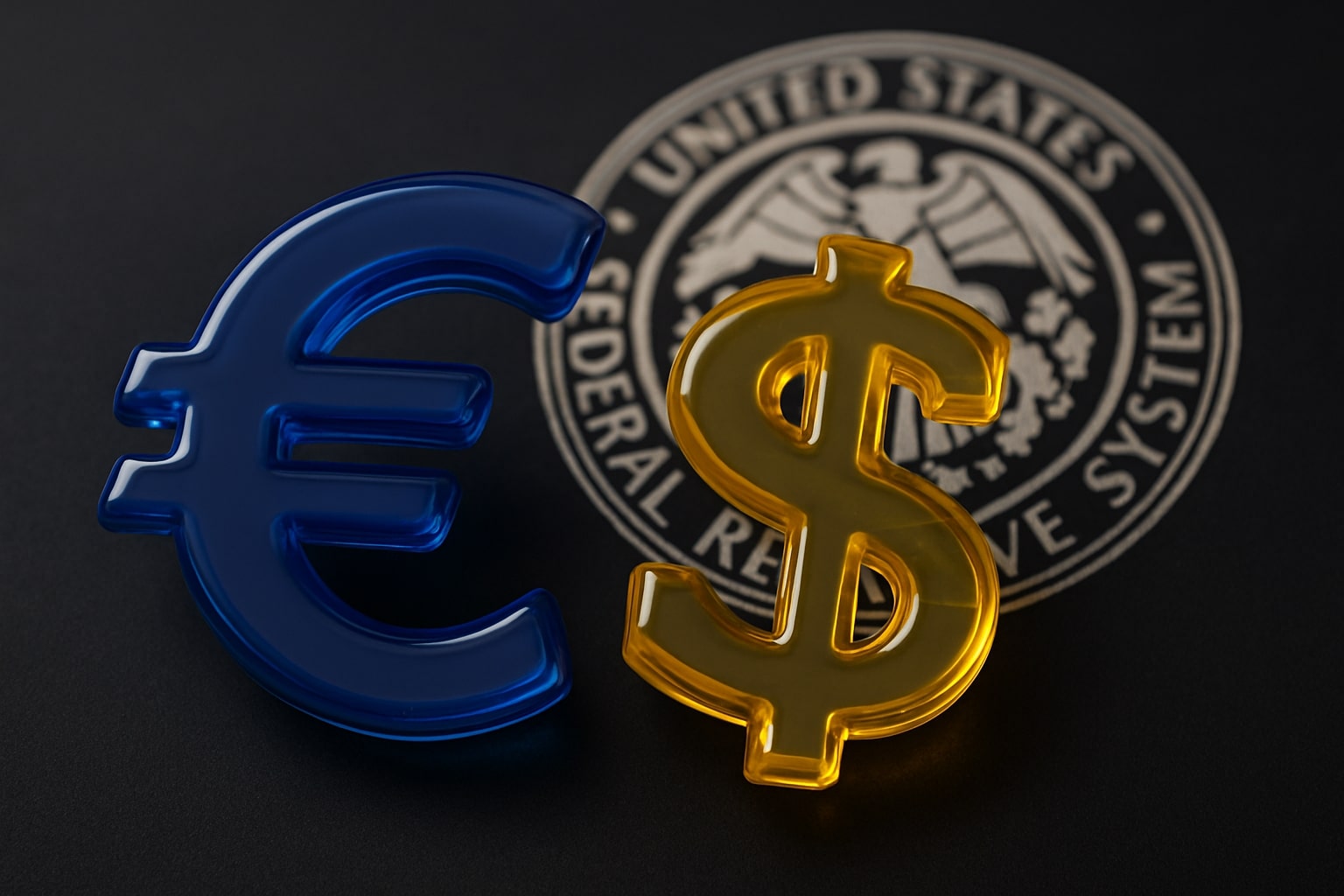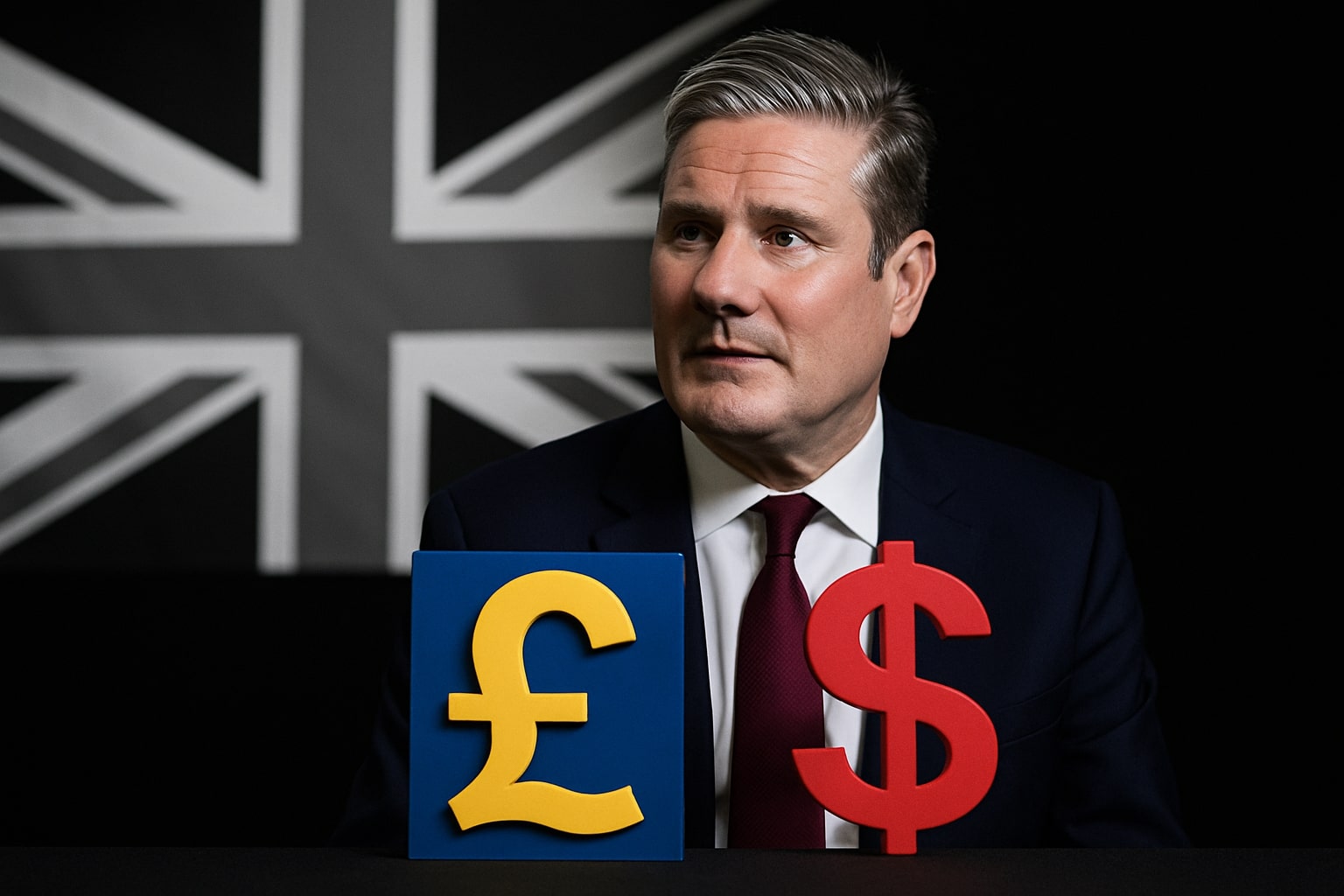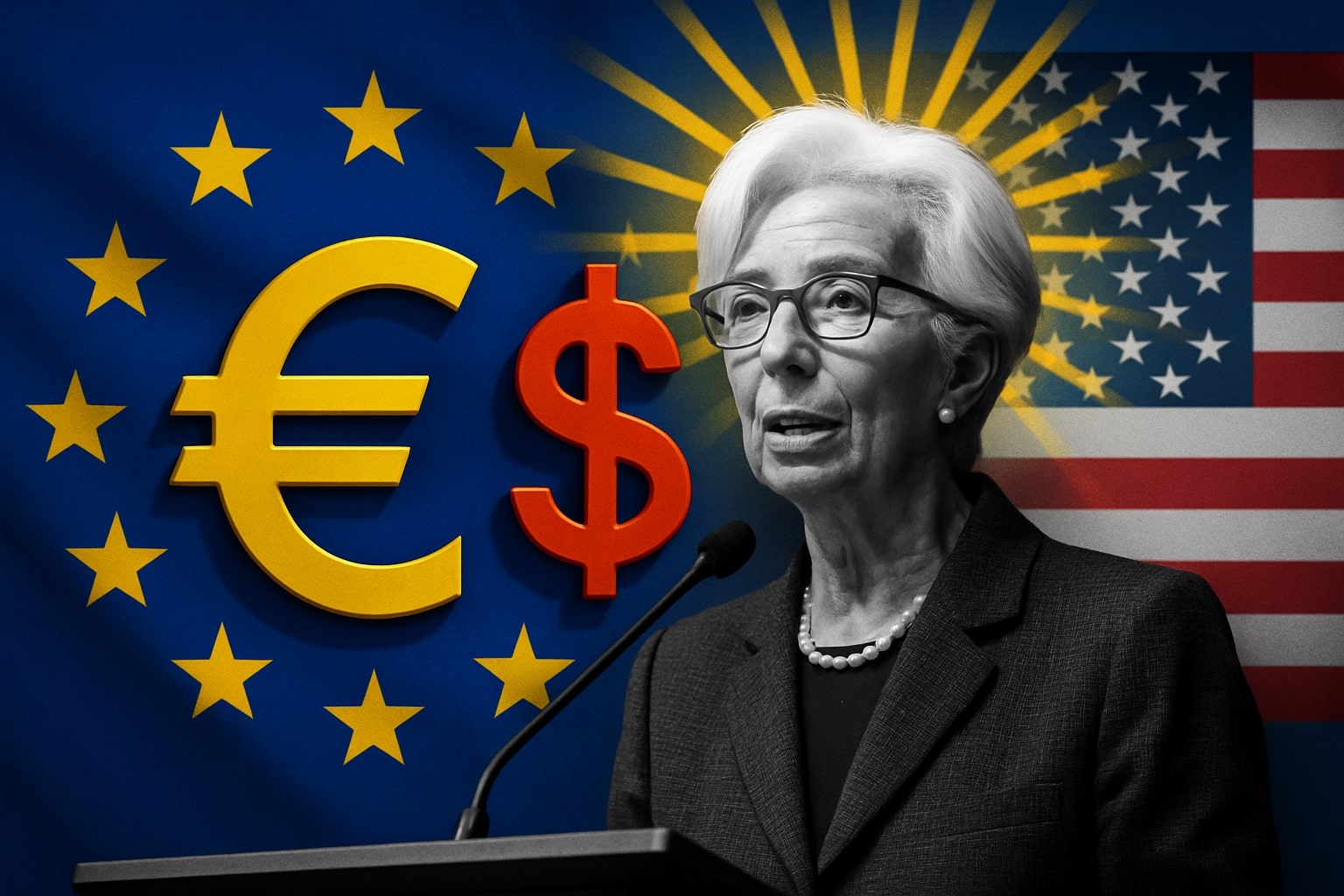
EUR/USD Price Forecast - EURO to Dollar Slides to 1.1590 as Dollar Strength
Euro drops 0.8% amid France’s 116.7% debt-to-GDP warning, DXY at 99.00, German output -4.3%, and Fed eyes two more rate cuts in 2025 | That's TradingNEWS
EUR/USD Extends Slide to 1.1590 as Dollar Surge and French Turmoil Pressure Euro
The EUR/USD pair continued its sharp decline on Thursday, falling to 1.1590, its weakest level in over a month, as political turmoil in France collided with a powerful rebound in the U.S. dollar (DXY 99.00, +0.73%). The euro struggled to hold the 1.1600 threshold amid renewed risk aversion, weak German data, and diverging central bank trajectories between the European Central Bank (ECB) and the Federal Reserve (Fed). Traders moved decisively toward the greenback as the U.S. government shutdown entered its ninth day, lifting safe-haven demand and adding pressure to euro bulls.
French Political Uncertainty Fuels Market Volatility
The political crisis in France has become a major destabilizing force for the euro. Following the temporary resignation of Prime Minister Sébastien Lecornu, President Emmanuel Macron urged him to remain in office for 48 more hours to stabilize parliament and avoid a snap election. However, with no parliamentary majority and debt expectations climbing to 116.7% of GDP in 2026—up from 113.1% in 2024—France’s fiscal credibility is under renewed scrutiny. Analysts at ING Bank warned that the probability of early elections “has increased significantly,” which could deepen uncertainty without resolving the country’s structural gridlock. Bond markets echoed this anxiety: French 10-year yields rose to 3.41%, widening the spread over German bunds to 68 basis points, the highest since March.
Germany’s Industrial Recession Weighs on the Eurozone
Across the bloc, economic data reinforced the euro’s vulnerability. Germany’s industrial production fell 4.3% month-over-month in August, with exports slipping 0.5% and imports down 1.8%, signaling waning global demand. While the trade surplus expanded to €17.2 billion, the improvement came from contracting imports rather than stronger exports—a clear indicator of domestic weakness. Combined with Eurozone GDP growth at just 0.1% q/q, investors see little macro justification for aggressive euro buying. The ECB minutes released Thursday showed no urgency to accelerate rate cuts but confirmed that policymakers remain divided, with several members cautioning against prolonged tightening amid disinflationary risks.
Dollar Strength and Fed Tone Keep Pressure on EUR/USD
The U.S. dollar index (DXY) rose sharply to 99.00, its highest since July, as traders favored the greenback on safe-haven flows and relatively stronger U.S. data. Fed New York President John Williams reiterated that the central bank is ready to support the labor market while monitoring inflation, reinforcing expectations of two more rate cuts before year-end. 10-year U.S. Treasury yields stabilized around 4.10%, with shorter maturities holding near 3.95%, sustaining the dollar’s carry advantage. Meanwhile, the U.S. ISM Manufacturing Index came in at 50.2, narrowly expanding for the first time in five months, while consumer confidence held firm at 104.6, underscoring resilience in U.S. domestic demand compared with Europe’s stagnation.
Technical Breakdown Shows Downside Bias Toward 1.1520
Technically, EUR/USD remains entrenched in a bearish structure. The pair trades below the 20-day moving average (1.1650) and 50-day average (1.1740), confirming downward momentum. The 14-day Relative Strength Index (RSI) stands at 41, showing room for further downside before oversold conditions emerge. Analysts identify immediate support at 1.1580, followed by 1.1520 and 1.1440, while resistance sits at 1.1680–1.1740. The MACD continues to slope negatively, reinforcing bearish momentum. A daily close below 1.1570 could trigger a deeper move toward 1.1500, marking the lowest since early August.
ECB vs. Fed Divergence Widens as Eurozone Faces Growth Stagnation
Diverging policy outlooks remain the dominant macro driver for EUR/USD. While the Fed is expected to deliver two additional rate cuts in 2025, it continues to project stronger U.S. employment and consumption trends. In contrast, the ECB faces political and fiscal fragmentation. The bloc’s credit growth has stagnated, and consumer lending fell 2.1% y/y, signaling weakening demand. The ECB’s Transmission Protection Instrument (TPI) remains a key safety valve for bond-market stress, but its use would only underline the severity of Europe’s internal divisions. MUFG Bank warned that “any call for parliamentary elections before year-end will raise downside risk for the euro,” while Scotiabank pointed to renewed fragmentation across Eurozone debt markets as a precursor to further currency volatility.
Read More
-
Is Nvidia (NVDA) Stock a Buy? +47% Upside Target as CUDA 13.1 and Rubin CPX Redefine the AI Race
08.12.2025 · TradingNEWS ArchiveStocks
-
XRP Price Forecast - XRP-USD Jumps to $2.08, Regulatory Clarity Fuel Rally Toward $3
08.12.2025 · TradingNEWS ArchiveCrypto
-
Oil Price Forecast - Oil Prices Drop Below $60 — WTI (CL=F) and Brent (BZ=F) Face Weak Demand and Fed Pressure
08.12.2025 · TradingNEWS ArchiveCommodities
-
Stock Market Today: Nasdaq Jumps to 23,627, Dow Jones at 47,774 as PSKY and IBM Stock Dominate Wall Street
08.12.2025 · TradingNEWS ArchiveMarkets
-
GBP/USD Price Forecast: Pound Builds Toward 1.35 on Fed Dovish Shift and U.K. Growth Revival
08.12.2025 · TradingNEWS ArchiveForex
French Risk and European Debt Dynamics Pressure Confidence
Market sentiment remains fragile as investors price in heightened political risk premia for European assets. The Euro Stoxx 50 declined 0.9% to 4,365, led by French banking and utility shares. Société Générale fell 3.1%, BNP Paribas dropped 2.8%, and EDF lost 2.4%, all reflecting concern over potential policy instability and fiscal slippage. Meanwhile, Italian 10-year yields edged up to 3.98%, tightening the gap with French yields, indicating broader regional stress. The euro’s risk-adjusted returns have underperformed major peers, down 2.7% YTD versus the dollar, while the Swiss franc (CHF) and Japanese yen (JPY) outperformed amid safe-haven demand.
Trading Strategy: Range Compression and Short Bias Persist
Market participants continue to position defensively. The CFTC Commitment of Traders data shows net euro long positions falling to 22,000 contracts, the lowest since April, reflecting fading optimism. In the options market, one-month implied volatility rose to 7.8%, signaling elevated event risk ahead of upcoming U.S. jobless claims and German CPI data. Traders see short-term opportunities to sell rallies near 1.1700, with downside targets at 1.1520–1.1440. Intraday sentiment remains weak unless the euro can reclaim 1.1680 with volume confirmation.
Outlook: EUR/USD Faces Continued Headwinds Into Q4 2025
The euro remains fundamentally challenged by weak growth, fiscal fragility, and political unrest. The Fed’s relatively stronger positioning and investor preference for dollar-denominated assets amplify these pressures. Unless Eurozone data surprises meaningfully to the upside or U.S. yields collapse, the EUR/USD is likely to remain under downward pressure through the fourth quarter. Technically and fundamentally aligned signals suggest the current bearish cycle could extend toward 1.1440 in the near term.
Verdict: Based on macro, political, and technical readings, EUR/USD remains a SELL, with rallies toward 1.1670–1.1700 viewed as opportunities to re-enter short positions. The medium-term bias stays bearish while below 1.1740, and only a sustained breakout above that level would challenge the current downtrend.


















